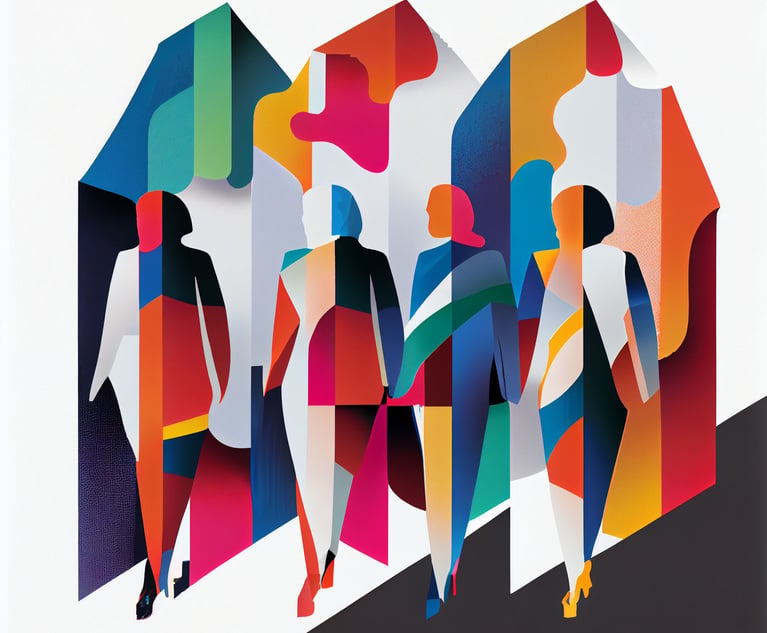California Bar Committee Endorses Lowering Exam Pass-Score
A California State Bar committee stocked with law school deans recommended on Wednesday that the Supreme Court reduce the bar exam passing score from 144 to as low as 135. The Law School Council endorsed setting the state's passing score between 135 and 139, a lower range than the 141 to 144 that a previous bar-commissioned study had suggested.
August 31, 2017 at 06:11 PM
7 minute read
A California State Bar committee stocked with law school deans recommended on Wednesday that the Supreme Court reduce the bar exam passing score from 144 to as low as 135.
The Law School Council endorsed setting the state's passing score between 135 and 139, a lower range than the 141 to 144 that a previous bar-commissioned study had suggested. A 135 score is the most common pass score, or cut score, in other states. An Aug. 25 letter signed by 19 of 21 ABA-approved law school deans recommended the score be temporarily set between 133 and 139 while the bar completes its analysis.
Council members and others referred to findings from a report released by the bar on Wednesday that looked at what the passage rates would have been for exam-takers in July 2008 and July 2016 if the passing score, or cut score, had been lower. At 135, the success rate would have jumped dramatically, from 43 percent to 66 overall and by 114 percent for African-Americans and by 75 percent for Hispanic test-takers.
University of California, Hastings College of Law Dean David Faigman, who does not sit on the council, testified on Wednesday that the 144 pass score has become an “anchor” in discussions about the appropriate number.
“Imagine if California indeed had a 135 cut score today and considered moving it to 144,” he said. “I don't think we would even be debating moving [it].”
A joint meeting of the bar's committee of bar examiners and the committee on admissions and education meets Thursday to consider its own score recommendation. The bar's board of trustees will make final recommendations to the state Supreme Court in September.
The question of what the appropriate cut score should be has come into sharp focus, and intense debate, over the last year as the exam's pass rate has tumbled. The bar posted an online survey on the topic and received more than 34,000 responses from attorneys. A slightly different survey was offered to July 2017 exam-takers and 4,188 of them responded.
The results were starkly different among the groups. About 80 percent of attorney-respondents opposed lowering the cut score. More than 90 percent of test-takers said the score should be reduced—a majority said it should be lower than 141.
Anonymous comments from attorneys included in Wednesday's report said California's score—the second-highest in the nation—produces highly competent lawyers who display discipline and grit by passing the test.
“To me, the declining pass rate seems to be more of a millennial problem (I say this as a millennial),” one attorney wrote. “Students don't want to work hard for anything, they expect it to be given to them. If they're not willing to put in the work, they should not be admitted as lawyers.”
Other commenters, however, said the high test score requirement is a poor predictor of competence and ethical adherence, one that puts California test-takers at a disadvantage to law school graduates in other states.
“It has been an extreme financial burden as I have spent over $20,000 dollars in bar fees, accommodations, and resources to prepare for the bar,” one graduate wrote. “Moreover, my employment opportunities and earning potential are on standby until I pass the bar.”
A California State Bar committee stocked with law school deans recommended on Wednesday that the Supreme Court reduce the bar exam passing score from 144 to as low as 135.
The Law School Council endorsed setting the state's passing score between 135 and 139, a lower range than the 141 to 144 that a previous bar-commissioned study had suggested. A 135 score is the most common pass score, or cut score, in other states. An Aug. 25 letter signed by 19 of 21 ABA-approved law school deans recommended the score be temporarily set between 133 and 139 while the bar completes its analysis.
Council members and others referred to findings from a report released by the bar on Wednesday that looked at what the passage rates would have been for exam-takers in July 2008 and July 2016 if the passing score, or cut score, had been lower. At 135, the success rate would have jumped dramatically, from 43 percent to 66 overall and by 114 percent for African-Americans and by 75 percent for Hispanic test-takers.
University of California, Hastings College of Law Dean David Faigman, who does not sit on the council, testified on Wednesday that the 144 pass score has become an “anchor” in discussions about the appropriate number.
“Imagine if California indeed had a 135 cut score today and considered moving it to 144,” he said. “I don't think we would even be debating moving [it].”
A joint meeting of the bar's committee of bar examiners and the committee on admissions and education meets Thursday to consider its own score recommendation. The bar's board of trustees will make final recommendations to the state Supreme Court in September.
The question of what the appropriate cut score should be has come into sharp focus, and intense debate, over the last year as the exam's pass rate has tumbled. The bar posted an online survey on the topic and received more than 34,000 responses from attorneys. A slightly different survey was offered to July 2017 exam-takers and 4,188 of them responded.
The results were starkly different among the groups. About 80 percent of attorney-respondents opposed lowering the cut score. More than 90 percent of test-takers said the score should be reduced—a majority said it should be lower than 141.
Anonymous comments from attorneys included in Wednesday's report said California's score—the second-highest in the nation—produces highly competent lawyers who display discipline and grit by passing the test.
“To me, the declining pass rate seems to be more of a millennial problem (I say this as a millennial),” one attorney wrote. “Students don't want to work hard for anything, they expect it to be given to them. If they're not willing to put in the work, they should not be admitted as lawyers.”
Other commenters, however, said the high test score requirement is a poor predictor of competence and ethical adherence, one that puts California test-takers at a disadvantage to law school graduates in other states.
“It has been an extreme financial burden as I have spent over $20,000 dollars in bar fees, accommodations, and resources to prepare for the bar,” one graduate wrote. “Moreover, my employment opportunities and earning potential are on standby until I pass the bar.”
This content has been archived. It is available through our partners, LexisNexis® and Bloomberg Law.
To view this content, please continue to their sites.
Not a Lexis Subscriber?
Subscribe Now
Not a Bloomberg Law Subscriber?
Subscribe Now
NOT FOR REPRINT
© 2025 ALM Global, LLC, All Rights Reserved. Request academic re-use from www.copyright.com. All other uses, submit a request to [email protected]. For more information visit Asset & Logo Licensing.
You Might Like
View All
Meta Workers Aren't of One Mind on Company's Retreat From DEI, Fact-Checking



Build It and They Will Come: Tips to Market Your Practice as a Junior Attorney
6 minute readTrending Stories
- 1Houston Law Firm Files $250K Breach of Contract Suit Against 2 Former Lawyers
- 2The Week in Data Feb. 3: A Look at Legal Industry Trends by the Numbers
- 3Mass Tort Cases: Challenges for Plaintiff’s and Defense Counsel
- 4Litigator of the Week Runners-Up and Shout-Outs: Davis Wright Tremaine, Wilmer and More
- 5Forum Clause Axes $844M Case Against Reinsurer Over Deadly Plane Crash, Judge Rules
Who Got The Work
J. Brugh Lower of Gibbons has entered an appearance for industrial equipment supplier Devco Corporation in a pending trademark infringement lawsuit. The suit, accusing the defendant of selling knock-off Graco products, was filed Dec. 18 in New Jersey District Court by Rivkin Radler on behalf of Graco Inc. and Graco Minnesota. The case, assigned to U.S. District Judge Zahid N. Quraishi, is 3:24-cv-11294, Graco Inc. et al v. Devco Corporation.
Who Got The Work
Rebecca Maller-Stein and Kent A. Yalowitz of Arnold & Porter Kaye Scholer have entered their appearances for Hanaco Venture Capital and its executives, Lior Prosor and David Frankel, in a pending securities lawsuit. The action, filed on Dec. 24 in New York Southern District Court by Zell, Aron & Co. on behalf of Goldeneye Advisors, accuses the defendants of negligently and fraudulently managing the plaintiff's $1 million investment. The case, assigned to U.S. District Judge Vernon S. Broderick, is 1:24-cv-09918, Goldeneye Advisors, LLC v. Hanaco Venture Capital, Ltd. et al.
Who Got The Work
Attorneys from A&O Shearman has stepped in as defense counsel for Toronto-Dominion Bank and other defendants in a pending securities class action. The suit, filed Dec. 11 in New York Southern District Court by Bleichmar Fonti & Auld, accuses the defendants of concealing the bank's 'pervasive' deficiencies in regards to its compliance with the Bank Secrecy Act and the quality of its anti-money laundering controls. The case, assigned to U.S. District Judge Arun Subramanian, is 1:24-cv-09445, Gonzalez v. The Toronto-Dominion Bank et al.
Who Got The Work
Crown Castle International, a Pennsylvania company providing shared communications infrastructure, has turned to Luke D. Wolf of Gordon Rees Scully Mansukhani to fend off a pending breach-of-contract lawsuit. The court action, filed Nov. 25 in Michigan Eastern District Court by Hooper Hathaway PC on behalf of The Town Residences LLC, accuses Crown Castle of failing to transfer approximately $30,000 in utility payments from T-Mobile in breach of a roof-top lease and assignment agreement. The case, assigned to U.S. District Judge Susan K. Declercq, is 2:24-cv-13131, The Town Residences LLC v. T-Mobile US, Inc. et al.
Who Got The Work
Wilfred P. Coronato and Daniel M. Schwartz of McCarter & English have stepped in as defense counsel to Electrolux Home Products Inc. in a pending product liability lawsuit. The court action, filed Nov. 26 in New York Eastern District Court by Poulos Lopiccolo PC and Nagel Rice LLP on behalf of David Stern, alleges that the defendant's refrigerators’ drawers and shelving repeatedly break and fall apart within months after purchase. The case, assigned to U.S. District Judge Joan M. Azrack, is 2:24-cv-08204, Stern v. Electrolux Home Products, Inc.
Featured Firms
Law Offices of Gary Martin Hays & Associates, P.C.
(470) 294-1674
Law Offices of Mark E. Salomone
(857) 444-6468
Smith & Hassler
(713) 739-1250






